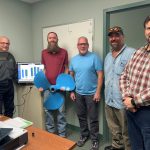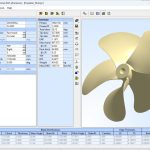Leading Solutions for Maritime Design
HydroComp’s tools for naval architects and engineers aid in the design and analysis of a wide variety of boats, ships, submersibles, and other vehicles around the world with our products NavCad and PropElements. Our PropCad and PropExpert software for those in the propeller trades provide for proper sizing of propellers in the propulsion system, as well as for the design and 3D CAD of marine propellers.
NavCad has the tools you need for the hydrodynamic and propulsion system simulation of vessel speed and performance, whether it’s a workboat, pleasure craft, or large ship. Our software is well suited for the sizing and analysis of propellers for boats and ships of all sizes. PropExpert and NavCad guide you to the proper selection of propulsion system components – engine, gear, and propeller.
HydroComp’s solutions benefit marine propeller professionals for a wide variety of craft. PropExpert or NavCad define the global parameters of the propellers, taking into consideration clearance, local flow properties, strength, noise, and vibration. PropElements is the platform for wake-adapted optimization of the propeller, and PropCad provides the geometric modeling capabilities necessary for development of design drawings and 3D models of marine propellers.
Powerful Software Solutions
First developed software during the desktop computing infancy, HydroComp has become the foremost expert for the maritime industry’s hydrodynamic and propulsion system performance challenges. Our offerings include:
NavCad®
HydroComp’s flagship hydrodynamic and propulsion system simulation software is built on a physics-based performance equilibrium of the Vessel-Propulsor-Drive system model. NavCad is known for its reliable and confident prediction and analysis of vessel speed and power performance, including metrics for full mission propulsion energy and sustainability. It also provides designers with the necessary tools for the optimized selection of suitable propulsion system components.
PropCad®
HydroComp’s fast and powerful propeller geometric modeling software increases productivity for propeller designers and manufacturers, producing better propeller designs in less time. PropCad provides full control over the blade parameters and hydrodynamic section shapes, and automatically prepares 2D design drawings, 3D CAD models, construction data, and offset reports, as well as Class society thickness calculations.
PropExpert®
HydroComp’s software for the selection and analysis of propeller systems is useful for workboats and pleasure craft. It features contemporary techniques presented in an easy-to-use and powerful package, and assists in elements of sizing commercial propellers, such as diameter, pitch, blade area, and reduction gear ratio.

HYDROCourses is the newest innovation from HydroComp, Inc.
Our new HYDROCourses were designed to provide clear and consistent content and to facilitate easy-to understand delivery of typically complex topics. These courses will sharpen your existing proficiencies - or even build new skills - while providing practical and insightful knowledge. Explore key subjects about hydrodynamics and propellers in a flexible on-demand format, so learning is at your own pace and convenience.
Newly Added Courses
Ducted Propellers
This certificate course is valuable for propulsion equipment vendors and vessel designers. This course will introduce the hydrodynamics of propeller nozzles and the implications of different nozzle styles.
Propeller Repitching
This certificate course is appropriate for propeller repair shops, propulsion equipment vendors, naval architects, and boat builders seeking repitch knowledge.
Engine Power Curves
This certificate course will review how a full engine power curve is needed to properly evaluate vessel performance in off-design and dynamic conditions.
Resources/Blog Posts
Case Study
Jaia Robotics - The Little Bot That Could
JaiaBots are micro-sized AUVs for aquatic data collection from Jaia Robotics LLC. HydroComp utilized our NavCad and PropElements software to assist with the development of a compact propulsion system and hull form improvements.


